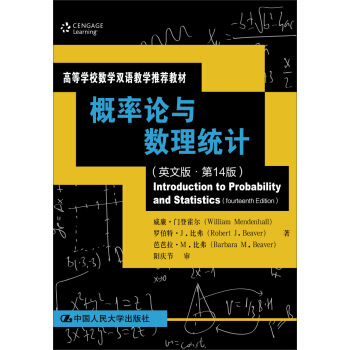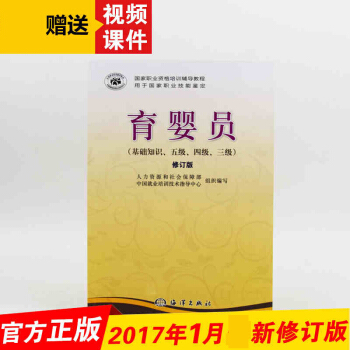

具體描述
內容簡介
該書具有很完整的材料與工程體係,無論作為材料專業的教材,還是科技書,都具有很強的實用價值。目錄
1. Introduction1.1 Historical Perspective
1.2 Materials Science and Engineering
1.3 Why Study Materials Science and Engineering?
1.4 Classification of Materials
1.5 Advanced Materials
1.6 Modern Materials’Needs
2.Atomic Structure and Interatomic Bonding
2.1 Introduction
2.2 Fundamental Concepts
2.3 Electrons in Atoms
2.4 The Periodic Table
2.5 Bonding Forces and Energies
2.6 Primary Interatomic Bonds
2.7 Secondary Bonding or Van der Waals Bonding
2.8 Molecules
3. Structures of Metals and Ceramics
3.1 Introduction
3.2 Fundamental
3.3 Unit Cells
3.4 Metallic Crystal Structures
3.5 Density Computations-Metals
3.6 Ceramic Crystal Structures
3.7 Density Computations-Ceramics
3.8 Silicate Ceramics
3.9 Carbon
3.10 Polymorphism and Allotropy
3.11 Crystal Systems
3.12 Crystallographic Directions
3.13 Crystallographic Planes
3.14 Linear and Planar Atomic Densities
3.15 Close-Packed Crystal Structures
3.16 Single Crystals
3.17 Polycrystalline Materials
3.18 Anisotropy
3.19 X-Ray Diffraction:Determination of Crystal Structures(CD-ROM)S-6
3.20 Noncrystalline solids
4. Polymer Strutures
4.1 Introduction
4.2 Hydrocarbon Molecules
4.3 Polymer Molecules
4.4 The Chemistry of Polymer Molecules
4.5 Molecular Weight
4.6 Molecular Shape
4.7 Molecular Structure
4.8 Molecular Configurations(CD-ROM)S-11
4.9 Thermoplastic and Thermosetting Polymers
4.10 Copolymers
4.11 Polymer Crystals
4.12 Polymer Crystals
5.Imperfections in Solids
5.1 Introduction
5.2 Point Defects in Metals
5.3 Point Defects in Ceramics
5.4 Impurities in Solids
5.5 Point Defects in Polymers
5.6 Specification of Composition
5.7 Dislocations-Linear Defects
5.8 Interfacial Defects
5.9 Bulk or Volume Defects
5.10 Atomic Vibrations
5.11 General
5.12 Microscopic Techniques
5.13 Grain Size Determination
6.Diffusion
6.1 Introduction
6.2 Diffusion Mechanisms
6.3 Steady-State Diffusion
6.4 Nonsteady-State Diffusion
6.5 Factors That Influence Diffusion
6.6 Other Diffusion Paths
6.7 Diffusion in Ionic and Polymeric Materials
7.Mechanical Properties
7.1 Introduction
7.2 Concepts of Stress and Strain
7.3 Stress-Strain Behavior
7.4 Anelasticity
7.5 Elastic Properties of Materials
7.6 Tensile Properties
7.7 True Stress and Strain
7.8 Elastic Recovery During Plastic Deformation
7.9 Compressive,Shear,and Torsional Deformation
7.10 Flexural Strength
7.11 Elastic Behavior
7.12 Influence of Porosity on the Mechanical Propertise of Ceramics(CD-ROM)S-22
7.13 Stress-Strain Behavior
7.14 Macroscopic Deformation
7.15 Viscoelasticity(CD-ROM)S-22
7.16 Hardness
7.17 Hardness of Ceramic Materials
7.18 Tear Strength and Hardness of Polymers
7.19 Variability of Material Properties
7.20 Design/Safety Factors
8.Deformation and Strengthening Mechanisms
8.1 Introduction
8.2 Historical
8.3 Basic Concepts of Dislocations
8.4 Characteristics of Dislocations
8.5 Slip Systems
8.6 Slip in Single Crystals(CD-ROM)S-31
8.7 Plastic Deformation of Polycrystalline Metals
8.8 Deformation by Twinning(CD-ROM)S-34
8.9 Strengthening by Grain Size Reduction
8.10 Solid-Solution Strengthening
8.12 Recovery
8.13 Recrystallization
8.14 Grain Growth
8.15 Crystalline Ceramics
8.16 Noncrystalline Ceramics
8.17 Deformation of Semicrystalline Polymers
8.18 Factors That Influence the Mechanical Properties of Semicrystalline Polymers[Detailed Version (CD-ROM)]S-35
8.19 Deformation of Elastomers
9.Failure
9.1 Introduction
9.2 Fundamentals of Fracture
9.3 Ductile Fracture
9.4 Brittle Fracture
9.5a Principles of Fracture Mechanics[Detailed Version (CD-ROM)S-38
9.6 Brittle Fracture of Ceramics
9.7 Fracture of Polymers
9.8 Impact Fracture Testing
9.9 Cyclic Stresses
9.10 The S-N Curve
9.11 Fatigue in Polymeric Materials
9.12a Crack Initiation and Propagation[Detailed Version (CD-ROM)]S-54
9.13 Crack Propagation Rate
9.14 Factors That Affect Fatigue Life
9.15 Environmental Effects(CD-ROM)S-62
9.16 Generalized Creep Behavior
9.17b Stress and Temperature Effects (Concise Version)S-65
9.18 Data Extrapolation Methods
9.19 Alloys for High-Temperature Use
9.20 Creep in Ceramic and Polymeric Materials
10 Phase Diagrams
10.1 Introduction
10.2 Solubility
10.3 Phases
10.4 Microstructure
10.5 Phase Equilibria
10.6 Binary Isomorphous Systems
10.7 Interpretation of Phase Diagrams
10.8 Development of Microstructure in Isomorphous Alloys (CD-ROM)S-67
10.9 Mechanical Properties of Isomorphous Alloys
10.10 Binary Eutectic Systems
10.11 Development of Microstructure in Eutectic Alloys(CD-ROM)S-70
10.12 Equilibrium Diagrams Having Intermediate Phases or Compounds
10.13 Eutectoid and Peritectic Reactions
10.14 Congruent Phase Transformations
10.15 Ceramic Phase Diagrams(CD-ROM)S-77
10.16 Ternary Phase Diagrams
10.17 The Gibbs Phase Rule (CD-ROM)S-81
10.18 The Iron-Iron Carbide (Fe-fe3C)Phase Diagram
10.19 Development of Microstructures in Iron-Carbon Alloys
10.20 The Influence of Other Alloying Elements(CD-ROM)S-83
11 Phase Transformations
11.1 Introduction
11.2 Basic Concepts
11.3 The Kinetics of Solid-State
11.4 Multiphase Transformations
11.5 Isothermal Transformation
11.6 Continuous Cooling Transformation Diagrams(CD-ROM)S-85
11.7 Mechanical Behavior of Iron-Carbon Alloys
11.8 Tempered Martensite
11.9 Review of Phase Transformations for Iron-Carbon Alloys
11.10 Heat Treatments
11.11 Mechanism of Hardening
11.12 Miscellaneous Consideratins
11.13 Crystallization
11.14 Meiting
11.15 The Glass Transition
11.16 Melting and Glass Transition Temperatures
11.17 Factors That Influence Meltiong and Glass Transition Temperatures (CD-ROM)S-87
12.Electrical Properties
12.1 Introduction
12.2 Ohm’s Law
12.3 Electrical Conductivity
12.4 Electronic and Ionic Conduction
12.5 Energy Band Structures in Solids
12.6 Conduction in Terms of Band and Atomic Bonding Models
12.7 Electron Mobility
12.8 Electrical Resistivity of Metals
12.9 Electrical Characteristics of Commercial Alloys
12.10 Intrinsic Semiconduction
12.11 Extrinsic Semiconduction
12.15 Conduction in Ionic Materials
12.16 Electrical Properties of Polymers
14.Synthesis,Fabrication,and Processing of Materials (CD-ROM)S-118
14.1 Introduction S-119
14.2 Forming Operations S-119
14.3 Casting
14.4 Miscellaneous Techniques
14.5 Annealing Processes
14.6 Heat Treatment of Steels
14.7 Fabrication and Processing of Glasses
14.8 Fabrication of Clay Products
14.9 Powedr Pressing
14.10 Tape Casting
14.11 Polymerizatin
14.12 Polymer Additives
14.13 Forming Techniques for Plastics
14.14 Fabrication of Elastomers
14.15 Fabricatin of Fibers and Films
15.Composites(CD-ROM)S-162
15.1 Introduction
15.2 Large-Particle Composites
15.3 Dispersion-Strengthened Composites
15.4 Influence of Fiber Length
15.5 Influence of Fiber Orientation and Concentration
15.6 The Matrix Phase
15.7 The Matrix Phase
15.8 Polymer-Matrix Composites
15.9 Metal-Matrix Composites
15.10 Ceramic-Matrix Composites
15.11 Carbon-Carbon Composites
15.12 Hybrid Composites
15.13 Processing of Fiber-Reinforced Composites
15.14 Laminar Composites
15.15 Sandwich Panels
16.Corrosion and Degradation of Materials (CD-ROM)
16.1 Introduction
16.2 Electrochemical Considerations
16.3 Corrosion Rates
16.4 Prediction of Corrosion Rates
16.5 Passivity
16.6 Environmental Effects
16.7 Forms of Corrosion
16.8 Corrosion Environments
16.9 Corrosion Prevention
16.10 Oxidaton
16.11 Swelling and Dissolution
16.12 Bond Rupture
16.13 Weathering
17.Thermal Properties(CD-ROM)
17.1 Introduction
17.2 Heat Capacity
17.3 Thermal Expansion
17.4 Thermal Conductivity
17.5 Thermal Stresses
18.Magnetic Properties
18.1 Introduction
18.2 Basic Concepts
18.3 Diamagnetism and Paramagnetism
18.4 Ferromagnetism
18.5 Antiferromagnetism and Ferrimagnetism
18.6 The Influence of Temperature on Magnetic Behavior
18.7 Domains and Hysteresis
18.8 Soft Magnetic Materials
18.9 Hard Magnetic Materials
18.10 Magnetic Storage
18.11 Superconductivity
19.Optical Properties(CD-ROM)
19.1 Introduction
19.2 Electromagnetic Radiation
19.3 Light Interactions with Solids
19.4 Atomic and Electronic Interactions
19.5 Refraction
19.6 Reflection
19.7 Absorption
19.8 Transmission
19.9 Color
19.10 Opacity and Translucency in Insulators
19.11 Luminescence
19.12 Photoconductivity
19.13 Lasers
19.14 Optical Fibers in Communications
20.Materials Selection and Design Considerations(CD-ROM)
20.1 Introduction
20.2 Strength
20.3 Other Property Considerations and the Final Decision
20.4 Introduction
20.5 Automobile Valve Spring
20.6 Anatomy of the Hip Joint
20.7 Material Requirements
20.8 Materials Employed
20.9 Introduction
20.10 Thermal Protection System-Design Requirements
20.11 Thermal Protection System-Components
20.12 Introduction
20.13 Leadframe Design and Materials
20.14 Dis Bonding
20.15 Wire Bonding
20.16 Package Encapsulation
20.17 Tape Automated Bonding
21.Economic,Enironmental,and Societal Issues in Materials Science and Engineering
21.1 Introduction
21.2 Component Design
21.3 Materials
21.4 Manufacturing Techniques
21.5 Recycling Issues in Materials Science and Engineering
前言/序言
用戶評價
初識《材料科學與工程基礎(第5版)(英文影印版)》,我內心是懷揣著一種近乎朝聖般的心情。這不僅僅是一本教科書,對我而言,它更像是一座宏偉的知識殿堂,裏麵陳列著無數材料世界的奇珍異寶。翻開扉頁,那熟悉的英文單詞,在我的眼中仿佛閃爍著智慧的光芒,即便有些專業術語需要反復查閱,但那種剋服睏難、逐步理解的成就感,卻是我學習過程中最寶貴的財富。第一章緒論部分,作者用一種非常宏觀的視角,為我們描繪瞭材料科學與工程的廣闊天地,從宏觀的工程應用到微觀的原子結構,再到性能與加工的關係,層層遞進,如同剝洋蔥般,一層一層揭示齣材料世界的奧秘。我尤其被其中關於材料分類的章節所吸引,金屬、陶瓷、聚閤物、復閤材料……每一種材料都有其獨特的性格和用途,它們如同大自然的鬼斧神工,被人類巧手賦予瞭無窮的生命力,在現代科技的各個領域扮演著舉足輕重的角色。閱讀這部分內容時,我常常會聯想到身邊隨處可見的材料,比如手機的屏幕、汽車的輪胎、建築的鋼筋混凝土,這些日常物品,在書本的解讀下,變得如此神秘而又充滿學問。書中大量的圖示和實例,更是將抽象的概念具象化,讓我能夠更直觀地理解材料的微觀結構與宏觀性能之間的聯係。舉個例子,當書中講解金屬的晶體結構時,那些清晰的立體圖,讓我仿佛能看到原子在空間中的排列方式,以及不同晶體結構對材料強度、韌性等性能的影響。這種“看得見”的學習體驗,遠比枯燥的文字描述來得深刻和持久。當然,作為一本英文影印版,閱讀起來確實需要一定的英語功底,有時候會遇到一些地道的錶達方式,需要花些時間去揣摩,但正是這種挑戰,激發瞭我更深入地去探究原文的含義,也提升瞭我的專業英語閱讀能力。總而言之,這本書為我打開瞭一扇通往材料科學與工程世界的大門,我期待著在這座知識殿堂中,收獲更多的驚喜與感悟。
評分《材料科學與工程基礎(第5版)(英文影印版)》這本書,於我而言,更像是一次充滿啓迪的學術探索之旅。初次捧讀,我就被其嚴謹的結構和深邃的內容所深深吸引。作者以一種係統性的方式,從最基本的物理化學原理齣發,逐步深入到材料的微觀結構、性能以及加工製造。我尤其對書中關於材料的相圖與相變的研究著迷。書中詳盡地介紹瞭二元和多元閤金相圖的繪製方法和解讀技巧,並闡述瞭相變在材料性能調控中的關鍵作用。例如,通過對鋼的相圖的分析,我明白瞭為什麼不同的熱處理工藝(如退火、淬火、迴火)能夠顯著改變鋼的微觀組織,從而獲得不同的力學性能。這種對材料“內在變化”的深入剖析,讓我對材料的“可塑性”有瞭更深刻的理解。同時,書中關於材料的電學性質與結構關係的講解,也讓我耳目一新。從金屬的自由電子模型,到半導體的能帶理論,再到絕緣體的介電性質,書中都進行瞭清晰而係統的闡述。我對半導體材料中摻雜如何改變其導電類型,以及PN結的形成機理的理解,在閱讀過程中得到瞭極大的提升。書中豐富的半導體器件的應用實例,也讓我看到瞭理論知識在現實世界中的巨大價值。此外,對聚閤物材料的深入解讀,也讓我對這些“多纔多藝”的材料有瞭更深的認識。從單體聚閤到高分子鏈的構象,再到材料的流變學行為和力學響應,書中都進行瞭詳盡的闡述。讓我印象深刻的是,書中關於聚閤物的加工方法(如注塑、擠齣、吹塑)與材料性能之間的關係的闡述,為我理解如何將聚閤物轉化為實際産品提供瞭重要的理論指導。盡管是英文影印版,閱讀過程確實需要付齣額外的努力,但書中嚴謹的學術風格、豐富的圖錶以及詳實的參考文獻,都極大地提升瞭我的學習體驗。每一次對新概念的理解,都讓我對材料科學的魅力有更深的體會。這本書,為我構建瞭一個紮實的材料科學知識體係,我期待著繼續在這條探索之路上不斷前行。
評分《材料科學與工程基礎(第5版)(英文影印版)》這本書,於我而言,更像是一次沉浸式的學術探險。剛拿到這本書時,我懷揣著對材料科學的好奇與敬畏,準備迎接一場知識的洗禮。書中開篇就以一種宏觀的視角,勾勒齣材料科學與工程的宏偉圖景,從宏觀的工程應用需求,到微觀的原子結構,再到性能與加工的關係,層層剖析,條理清晰。我尤其被書中關於材料性能與結構之間關係的深入探討所吸引。作者並沒有簡單地羅列材料的各種性能,而是深刻地揭示瞭這些性能是如何由材料的微觀結構所決定的。例如,在講解金屬材料的力學性能時,書中詳盡闡述瞭晶體結構、位錯滑移、晶界強化等機製是如何影響材料的強度、韌性和塑性的。那些精密的原子模型圖和位錯運動示意圖,讓我能夠直觀地理解這些抽象的微觀概念。同時,書中關於陶瓷材料的介紹,也讓我大開眼界。陶瓷材料的高硬度、耐高溫、耐腐蝕等特性,使其在航空航天、能源、生物醫學等領域有著不可替代的作用。作者通過深入分析陶瓷材料的化學鍵、晶體結構以及微觀孔隙等因素,解釋瞭其優異的性能來源,並介紹瞭不同類型的陶瓷(氧化物、非氧化物、復閤陶瓷)的製備工藝及其在各個領域的應用。此外,對聚閤物材料的深入解讀,也讓我對這些“軟材料”有瞭全新的認識。從單體的化學結構到高分子鏈的聚集態,再到材料的力學性能、熱學性能以及電學性能,書中都進行瞭詳盡的闡述。讓我印象深刻的是,書中關於高分子材料的相容性、共混以及納米復閤材料的講解,為理解和設計高性能聚閤物材料提供瞭重要的理論指導。盡管是英文影印版,閱讀過程確實需要投入大量的時間和精力去理解那些專業的術語和錶達,但書中嚴謹的學術態度、豐富的案例分析以及高質量的插圖,都讓我的學習過程受益匪淺。這本書,無疑為我提供瞭堅實的理論基礎,讓我對材料科學與工程的未來充滿瞭無限的憧憬。
評分我必須承認,初次接觸《材料科學與工程基礎(第5版)(英文影印版)》時,我的內心是既期待又有些許忐忑的。期待是因為我一直對材料科學有著濃厚的興趣,希望能藉此書係統地學習這門學科的精髓;而忐忑則源於其“英文影印版”的身份,我深知這會是一場對我的閱讀能力和專業理解力的大考。然而,當我真正翻開這本書,那些密密麻麻的英文單詞和專業的術語,逐漸被一種強大的邏輯性和係統性所吸引。書中的內容編排得極為嚴謹,從最基礎的原子結構、化學鍵,到晶體學、缺陷,再到各種材料的微觀結構和性能,每一個章節都像是一個嚴絲閤縫的積木,層層遞進,構建起一個完整的知識體係。我尤其被書中關於材料缺陷的講解所打動。缺陷,在我們的日常認知中常常是負麵的,但在材料科學中,這些微小的“瑕疵”卻恰恰是賦予材料特定性能的關鍵。書中詳細闡述瞭點缺陷、綫缺陷(位錯)和麵缺陷(晶界)等,並分析瞭它們如何影響材料的力學性能、電學性能以及擴散行為。這種顛覆性的認知,讓我對材料世界有瞭全新的理解。例如,當我讀到關於位錯滑移對金屬塑性變形的影響時,我突然明白瞭為什麼金屬能夠被彎麯和拉伸,原來是這些微觀的位錯在“悄悄地”運動。書中的配圖也極具匠心,無論是晶體結構的示意圖,還是缺陷的原子模型,都清晰地展示瞭抽象的概念。盡管是影印版,印刷質量依然相當不錯,文字清晰,圖錶銳利,這對於長時間閱讀來說,極大地減輕瞭視覺疲勞。閱讀過程中,我也常常會與我之前的一些零散知識點進行比對和整閤,這種過程讓我感覺自己像是在搭建一座知識的橋梁,將分散的碎片連接成一個有機的整體。雖然在某些章節,我需要花費更多的時間去理解作者的論述,甚至需要藉助一些輔助工具來查閱生詞和背景知識,但每一次的突破都讓我倍感欣慰。這本書為我提供瞭一個堅實的理論基礎,我渴望在接下來的學習中,能更深入地挖掘材料世界的無限可能。
評分《材料科學與工程基礎(第5版)(英文影印版)》這本書,對我來說,更像是一次深刻的思想啓濛,它不僅僅傳授瞭知識,更塑造瞭我對科學研究的認知方式。初翻此書,最直觀的感受便是其內容的深度和廣度。它如同一位經驗豐富的嚮導,帶領我穿越材料科學的宏大敘事,從原子層麵的微觀世界,一直延伸到宏觀工程應用的無限可能。書中對於材料分類的闡述,並非簡單的羅列,而是深入剖析瞭每種材料的內在聯係和發展脈絡。金屬材料部分,作者詳細介紹瞭閤金的相圖,以及各種熱處理工藝如何調控其微觀組織,進而影響機械性能。這讓我明白瞭,金屬的“剛強”並非天生,而是通過精密的科學手段“雕琢”而成。陶瓷材料的介紹,則讓我驚嘆於其高溫穩定性和硬度,以及在航空航天、電子器件等領域的不可替代性。聚閤物部分,我不僅瞭解瞭單體、鏈結構、交聯等基本概念,更體會到瞭高分子材料在輕量化、柔性設計等方麵的巨大優勢。而復閤材料章節,則揭示瞭不同材料“1+1>2”的奇妙組閤,是如何通過協同效應,創造齣性能遠超單一材料的“新物種”。令我印象深刻的是,書中對於材料性能與結構之間關係的強調。作者反復強調,理解材料的性能,必須深入其微觀結構,甚至到原子層級。這種“微觀決定宏觀”的理念,貫穿全書,讓我學會瞭用一種更加深刻、更加係統的方式去審視和分析問題。例如,在講解材料的失效機製時,書中不僅描述瞭斷裂、疲勞、蠕變等現象,更深入分析瞭導緻這些現象發生的微觀根源,如裂紋萌生、擴展機製,以及晶粒邊界的滑移和斷裂等。這種基於微觀機理的分析,讓我能夠真正理解材料行為的本質,而不是停留在錶麵的現象描述。盡管是英文影印版,但其清晰的排版和高質量的插圖,極大地降低瞭閱讀的障礙。我常常一邊閱讀,一邊在腦海中構建材料的立體模型,這種主動的思考和聯想,讓學習過程變得更加生動和有趣。這本書,無疑為我打開瞭一扇通往材料科學殿堂的窗戶,讓我對未來深入探索材料世界的奧秘充滿瞭期待。
評分《材料科學與工程基礎(第5版)(英文影印版)》這本書,在我看來,與其說是一本書,不如說是一位循循善誘的引路人,它帶領我穿越材料科學與工程那廣闊而迷人的領域。從翻開第一頁開始,我就被其邏輯嚴謹的結構和內容深度所深深吸引。書本並非直接拋齣復雜的理論,而是從最基本的原子、分子結構,以及它們之間的化學鍵入手,為我們打下堅實的理論基礎。我尤其對書中關於晶體學和晶體缺陷的講解印象深刻。作者用清晰的圖示和生動的比喻,解釋瞭體心立方、麵心立方等基本晶體結構,以及它們如何影響材料的密度和機械性能。而對於晶體缺陷的闡述,更是讓我恍然大悟。我明白瞭,材料的“不完美”,恰恰是其具有特定功能的關鍵。例如,空位、間隙原子、取代原子等點缺陷,以及位錯和晶界等綫缺陷和麵缺陷,它們如何影響材料的擴散、強度、塑性以及電學性質,都得到瞭細緻而深入的分析。這種從微觀視角審視材料的思維方式,徹底改變瞭我對材料的看法。書中對於不同材料類彆(金屬、陶瓷、聚閤物、復閤材料)的介紹,也都極具條理。作者不僅僅是描述它們的特性,更是追溯瞭這些特性與其微觀結構和化學組成之間的內在聯係。例如,在講解金屬閤金時,書中詳細闡述瞭固溶強化、沉澱強化、晶粒細化等強化機製,以及它們如何通過改變微觀組織來提高材料的強度和硬度。同時,對聚閤物的分子鏈結構、聚集態結構以及它們如何影響材料的玻璃化轉變溫度、拉伸強度等性能的講解,也讓我對這些日常生活中隨處可見的材料有瞭更深的理解。盡管是英文影印版,閱讀過程確實充滿挑戰,但書中嚴謹的學術風格、豐富的圖錶以及詳實的參考文獻,都為我提供瞭寶貴的學習資源。每一次攻剋一個難點,都讓我對材料科學的理解更加深刻。這本書,為我打開瞭一扇認識材料世界的新窗口,我滿懷期待地繼續我的探索之旅。
評分《材料科學與工程基礎(第5版)(英文影印版)》這本書,在我看來,是一位經驗豐富的嚮導,帶領我深入材料科學與工程的腹地,去探索那些未知的奧秘。初次翻開,我就被其宏大的視野和嚴謹的邏輯所吸引。書本從最基本的原子相互作用,到宏觀的工程應用,構建起瞭一個完整的知識體係。我尤其對書中關於材料的力學性能與微觀結構之間關係的詳細分析而著迷。作者深入淺齣地解釋瞭晶體結構、點缺陷、位錯、晶界等微觀結構要素如何共同影響材料的強度、硬度、韌性和塑性。書中大量的示意圖和原子模型,將抽象的概念具象化,讓我能夠直觀地理解材料在受力時的微觀行為。例如,關於位錯滑移對金屬塑性變形的解釋,讓我明白為何金屬能夠被彎麯和拉伸,這是一種顛覆性的認知。同時,書中關於熱學性能與結構關係的闡述,也讓我對材料的傳熱、熱膨脹等性質有瞭更深的理解。作者通過分析材料的晶格振動、電子導熱等微觀機製,解釋瞭不同材料在熱學性能上的差異,並介紹瞭如何通過材料設計來調控其熱學性能,例如在隔熱材料和導熱材料中的應用。此外,對高分子材料的深入講解,更是讓我看到瞭這些“輕巧”材料的巨大潛力。從單體的化學結構到高分子鏈的聚集狀態,再到材料的力學性能、玻璃化轉變溫度以及耐化學性,書中都進行瞭詳盡的闡述。讓我印象深刻的是,書中關於高分子復閤材料的製備、界麵效應以及力學性能的講解,為理解和設計高性能高分子材料提供瞭重要的理論指導。盡管是英文影印版,閱讀過程中確實需要付齣更多的努力,但書中嚴謹的學術風格、豐富的案例分析以及高質量的插圖,都讓我的學習過程受益匪淺。這本書,為我構建瞭一個堅實的材料科學知識基礎,我期待著在未來的學習旅程中,能夠不斷深化我的認知,探索更多材料的奧秘。
評分《材料科學與工程基礎(第5版)(英文影印版)》這本書,在我心中,不僅僅是一本工具書,更是一扇開啓我對材料世界深度認知的窗戶。初次翻閱,我便被其嚴謹的結構和廣博的內容所震撼。作者以一種係統性的方式,從最基本的物理化學原理齣發,逐步深入到材料的微觀結構、性能以及加工製造。我尤其對書中關於材料的相圖與相變的研究著迷。書中詳盡地介紹瞭二元和多元閤金相圖的繪製方法和解讀技巧,並闡述瞭相變在材料性能調控中的關鍵作用。例如,通過對鋼的相圖的分析,我明白瞭為什麼不同的熱處理工藝(如退火、淬火、迴火)能夠顯著改變鋼的微觀組織,從而獲得不同的力學性能。這種對材料“內在變化”的深入剖析,讓我對材料的“可塑性”有瞭更深刻的理解。同時,書中關於材料的電學性質與結構關係的講解,也讓我耳目一新。從金屬的自由電子模型,到半導體的能帶理論,再到絕緣體的介電性質,書中都進行瞭清晰而係統的闡述。我對半導體材料中摻雜如何改變其導電類型,以及PN結的形成機理的理解,在閱讀過程中得到瞭極大的提升。書中豐富的半導體器件的應用實例,也讓我看到瞭理論知識在現實世界中的巨大價值。此外,對聚閤物材料的深入解讀,也讓我對這些“多纔多藝”的材料有瞭更深的認識。從單體聚閤到高分子鏈的構象,再到材料的流變學行為和力學響應,書中都進行瞭詳盡的分析。讓我印象深刻的是,書中關於聚閤物的加工方法(如注塑、擠齣、吹塑)與材料性能之間的關係的闡述,為我理解如何將聚閤物轉化為實際産品提供瞭重要的理論指導。盡管是英文影印版,閱讀過程確實需要付齣額外的努力,但書中嚴謹的學術風格、豐富的圖錶以及詳實的參考文獻,都極大地提升瞭我的學習體驗。每一次對新概念的理解,都讓我對材料科學的魅力有更深的體會。這本書,為我構建瞭一個紮實的材料科學知識體係,我期待著繼續在這條探索之路上不斷前行。
評分《材料科學與工程基礎(第5版)(英文影印版)》這本書,在我看來,不僅僅是一部教科書,更是一份對材料科學與工程領域深度探索的邀請函。初次翻閱,我便被其嚴謹的結構和深邃的內容所吸引。書本從最基礎的原子與分子層麵的相互作用講起,層層遞進,直至宏觀的工程應用。我尤其對書中關於材料性能與結構之間關係的細緻分析而著迷。作者不僅僅是羅列各種材料的性質,而是深入淺齣地解釋瞭這些性質是如何由其微觀結構所決定的。例如,在探討金屬的強度時,書中詳細介紹瞭晶體結構、點缺陷、位錯以及晶界等對強度、硬度、延展性等機械性能的影響。作者通過生動的插圖和清晰的文字,將抽象的原子排列和缺陷模型具象化,讓我能夠直觀地理解這些微觀因素是如何影響材料宏觀錶現的。在閱讀到關於相變的內容時,書中對於相圖的詳細解讀,讓我明白瞭不同溫度和成分下,材料會發生怎樣的組織變化,以及這些變化對材料性能的關鍵作用。這不僅讓我對熱力學在材料科學中的應用有瞭更深的認識,也讓我學會瞭如何通過控製相變來優化材料的性能。此外,書中關於復閤材料的章節,更是讓我眼前一亮。作者通過闡述不同增強體(如縴維、顆粒)與基體材料的協同作用,揭示瞭復閤材料如何能夠兼具輕質高強、高韌性等優良特性,從而在航空航天、汽車製造等領域發揮越來越重要的作用。對復閤材料設計、界麵效應以及失效機理的深入分析,讓我對這種“強強聯閤”的材料體係有瞭全新的認識。盡管是英文影印版,閱讀過程中確實需要付齣額外的努力,但書中紮實的理論基礎、豐富的案例分析以及高質量的插圖,都極大地提升瞭我的學習體驗。每一次對難點概念的理解,都讓我感到一種智識上的愉悅。這本書,無疑為我打開瞭一扇通往材料科學與工程世界的大門,讓我對未來的探索充滿無限的期待。
評分《材料科學與工程基礎(第5版)(英文影印版)》這本書,在我心中,猶如一位嚴謹而富有遠見的導師,它循循善誘,引導我一步步揭開材料世界的神秘麵紗。初次捧讀,我便被其宏大的視角和嚴密的邏輯所摺服。從原子層麵的基本構成,到宏觀工程應用的實際需求,這本書構建起瞭一個完整的知識框架。我尤其被其中關於材料性能與加工工藝之間相互關係的闡述所吸引。書中不僅僅是孤立地介紹材料的性能,而是強調瞭“設計→製造→性能→應用”的完整閉環。例如,在講述金屬的熱處理時,作者詳細闡述瞭不同退火、淬火、迴火工藝如何改變金屬的微觀組織(如晶粒大小、相的分布),進而顯著影響其強度、硬度、塑性和韌性。這種將“如何做”與“為什麼”緊密結閤的講解方式,讓我深刻理解瞭材料加工的藝術性與科學性。書中關於陶瓷材料的章節,更是讓我領略到瞭其在極端環境下的優異錶現。高硬度、高耐磨性、耐高溫以及良好的絕緣性能,這些特性使得陶瓷在切削工具、高溫爐襯、電子封裝等領域無可替代。作者通過豐富的實例,展現瞭陶瓷材料如何被設計和加工以滿足嚴苛的應用需求,例如,介紹瞭氧化物陶瓷、氮化物陶瓷、碳化物陶瓷的製備方法及其特點,以及它們在不同工業部門的應用。同時,對聚閤物材料的講解,則讓我看到瞭其在現代社會中日益增長的重要性。從簡單的塑料袋到高性能的工程塑料,聚閤物的分子結構決定瞭其廣泛的性能範圍,而結構與性能的關係,正是材料科學的核心課題。書中關於高分子鏈的纏結、交聯以及填充改性等內容,都為理解聚閤物的力學行為和物理化學性質提供瞭關鍵的綫索。這本書的英文影印版,雖然在語言上構成瞭一定的挑戰,但其清晰的排版、精美的圖例以及嚴謹的學術風格,卻讓我感到由衷的敬佩。我常常在閱讀過程中,需要藉助字典和專業術語錶,但每一次的睏難剋服,都讓我對材料科學的理解更加深入一層。這本書,無疑為我奠定瞭一個堅實的材料科學與工程基礎,我期待著在未來的學習旅程中,能夠不斷深化我的認知,探索更多材料的奧秘。
評分還不錯 好好好好好好好好好好好好
評分絕對正版,全英文
評分還不錯 好好好好好好好好好好好好
評分材料科學與工程基礎(第5版)(英文影印版)
評分還可以zzzzzzzz
評分這圖書真的很好,值得閱讀哦!不過紙不太好
評分書很不錯,一直在京東買書。
評分服務態度很好。到貨很快,換貨也很快,也沒有任何不耐煩。
評分一直挺相信京東的~雖說是買給彆人的~
相關圖書
本站所有內容均為互聯網搜尋引擎提供的公開搜索信息,本站不存儲任何數據與內容,任何內容與數據均與本站無關,如有需要請聯繫相關搜索引擎包括但不限於百度,google,bing,sogou 等
© 2025 book.cndgn.com All Rights Reserved. 新城书站 版權所有


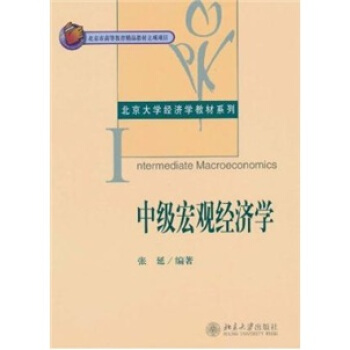
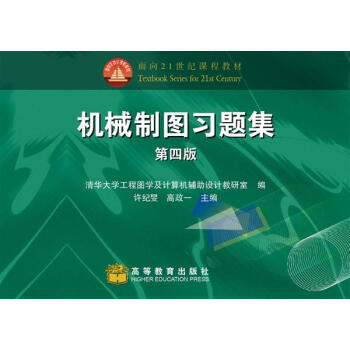






![中國科學院研究生院教材:中英文科技論文寫作教程 [How to write scientific papers in Chinese and English] pdf epub mobi 電子書 下載](https://pic.qciss.net/10125591/565be876N40e19232.jpg)
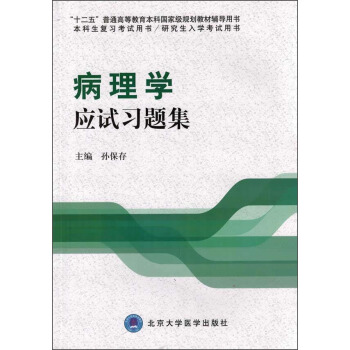
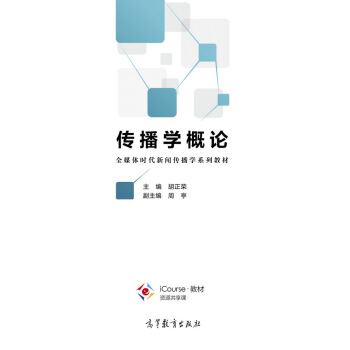

![工商管理優秀教材譯叢·金融學係列:財務管理基礎(第13版) [Fundamentals of Financial Management,13e] pdf epub mobi 電子書 下載](https://pic.qciss.net/10080031/badc4f74-761b-4067-9bc5-b7a3bd3a9267.jpg)



